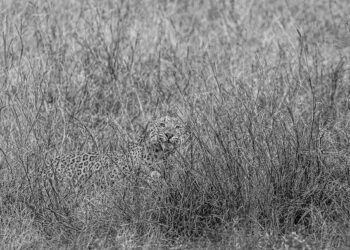
Nearsightedness is on the rise, likely due to modern lifestyles that require seeing objects up close, rather than adjusting to vision in the distance. Credit: American Institute of Physics
Modern living may be contributing to an epidemic of nearsighted vision and related blindness. By 2050, it is estimated that half the world’s population will suffer from low vision due to myopia, a condition where the eye grows too large and can no longer focus on objects in the distance. Human eyes, honed by evolution to survive in the wild, are ill-adapted to city living, contributing to increased cases of myopia, among other factors.
For decades, researcher Sally McFadden from the University of Newcastle has investigated eyes and eyesight in humans and animals. She will present her work and the importance of acoustical imaging as part of Acoustics 2023 Sydney, running Dec. 4–8 at the International Convention Center Sydney.
As humans age, our eyes adjust based on how we use them, growing or shortening to focus where needed. We now know that blurred input to the eye while the eye is growing causes myopia. It is so specific that the eye grows exactly to compensate for the amount and the direction of blur. For example, if you put the focus behind the retina, the eye grows longer, while if you put the focus in front of the retina, the eye slows its growth and becomes shorter.
If the eye grows too long, it becomes myopic or nearsighted. In extreme cases, high myopia is associated with glaucoma, and can increase the risk of retinal detachment and abnormal pathologies around the optic nerve which lead to profound blindness.
“Babies are generally born longsighted, and the changes in the optics of the eye have to coordinate with the eye growth to get to the perfect length for focused vision,” said McFadden. “The problem is that the human eye evolved to suit a hunter-gatherer lifestyle and is not adapted for modern living.”
McFadden and her team built a high-frequency ultrasonography system to measure eye size and how quickly eyes grow to better understand myopia and its contributing factors.
“Education level (amount of study) and the type of light stimulation to the eye all correlate with the amount of myopia you develop,” McFadden said. “Time spent outdoors is protective. Myopia is greater in cities than in rural populations, and even correlates with those that live in small homes.”
Currently, vision-correcting gear like glasses and contacts are the only solution for myopia. However, eye drops for children with myopia are in development and could halt the vision from worsening. Teams from around the world are collaborating to develop treatments for high myopia to preserve our vision.
Citation:
A farsighted approach to tackle nearsightedness (2023, December 4)
retrieved 4 December 2023
from https://medicalxpress.com/news/2023-12-farsighted-approach-tackle-nearsightedness.html
This document is subject to copyright. Apart from any fair dealing for the purpose of private study or research, no
part may be reproduced without the written permission. The content is provided for information purposes only.
>>> Read full article>>>
Copyright for syndicated content belongs to the linked Source : Medical Xpress – https://medicalxpress.com/news/2023-12-farsighted-approach-tackle-nearsightedness.html















![[News] Japan Develops 10nm Nanoimprint Technology, with Potential to Tackle EUV Bottleneck – TrendForce](https://earth-news.info/wp-content/uploads/2025/12/329851-news-japan-develops-10nm-nanoimprint-technology-with-potential-to-tackle-euv-bottleneck-trendforce-360x180.jpg)















